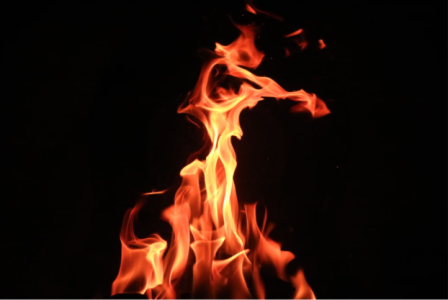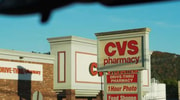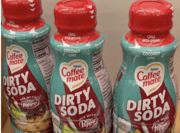Think your home is safe after the wildfire? For many, the real nightmare is just beginning
- Replies 0
For those lucky enough to see their homes still standing after wildfires, the initial feeling is one of deep relief.
But what happens when that relief fades and is replaced by something far more confusing—insurance paperwork, unanswered calls, and hidden dangers inside the very walls you thought were safe?
The fires may have stopped burning, but for many families, the damage is far from over.
From smoke contamination to toxic debris, the aftermath is proving just as devastating—and far more complicated to recover from.
And the worst part? For many survivors, help from their insurance company is nowhere in sight.
When wildfires swept through neighborhoods recently, not every house burned down.
But families returning to their homes soon found that survival came with a cost.
Homes that look untouched on the outside are coated with layers of fine ash inside—and smell like a permanent campfire.
Phil Lindholm described walking into his house and wiping soot off the walls.
“You don’t really notice it, but then when you wipe it, that’s what you’re dealing with,” he told local news.
For families like Kirstin Davis and Colin Fisher, the threat feels especially personal.
Fisher and his wife returned to find their 16-month-old son’s crib and toys coated in soot.
“I have no idea if it's toxic, if it's lead. I have a 16-month-old, and I don't want to expose him to lead,” he said.
Their yard backs right up to a house that burned—meaning the ash, debris, and toxic remains are just steps away.
Many homeowners assume that insurance will take care of everything.
But those assumptions are quickly being tested.
California law only requires upfront payments when homes are completely destroyed—not when they’re standing but contaminated.
So far, many survivors say they’re still waiting for their adjusters to show up.
Even more frustrating? Most insurance policies don’t cover air quality, soot removal, or environmental testing.
“They don’t do environmental or toxicity testing,” Davis said.
“They don't cover the air, so if the neighborhood air quality is bad, that doesn't matter as long as my structure is cleaned up; that's all they'll do,”
Jason Knedel, who lived with his wife and elderly mother, said it could take a year before they can return home—and even then, nearby demolition could force them to leave again.
Amy Bach, Executive Director of United Policyholders, says many insurance adjusters aren’t trained to evaluate environmental hazards.
“We hear so many stories about insurance company adjusters who don’t have the requisite training, licensure, or experience telling people that their homes are safe to move back into,” Bach said.
Read next:

Your advice or warning might be the lifeline another family needs. At The GrayVine, we believe the recovery doesn’t stop when the fire is out—it starts when we listen, share, and fight for better protections together.
But what happens when that relief fades and is replaced by something far more confusing—insurance paperwork, unanswered calls, and hidden dangers inside the very walls you thought were safe?
The fires may have stopped burning, but for many families, the damage is far from over.
From smoke contamination to toxic debris, the aftermath is proving just as devastating—and far more complicated to recover from.
And the worst part? For many survivors, help from their insurance company is nowhere in sight.
When wildfires swept through neighborhoods recently, not every house burned down.
But families returning to their homes soon found that survival came with a cost.
Homes that look untouched on the outside are coated with layers of fine ash inside—and smell like a permanent campfire.
Phil Lindholm described walking into his house and wiping soot off the walls.
“You don’t really notice it, but then when you wipe it, that’s what you’re dealing with,” he told local news.
For families like Kirstin Davis and Colin Fisher, the threat feels especially personal.
Fisher and his wife returned to find their 16-month-old son’s crib and toys coated in soot.
“I have no idea if it's toxic, if it's lead. I have a 16-month-old, and I don't want to expose him to lead,” he said.
Their yard backs right up to a house that burned—meaning the ash, debris, and toxic remains are just steps away.
Many homeowners assume that insurance will take care of everything.
But those assumptions are quickly being tested.
California law only requires upfront payments when homes are completely destroyed—not when they’re standing but contaminated.
So far, many survivors say they’re still waiting for their adjusters to show up.
Even more frustrating? Most insurance policies don’t cover air quality, soot removal, or environmental testing.
“They don’t do environmental or toxicity testing,” Davis said.
“They don't cover the air, so if the neighborhood air quality is bad, that doesn't matter as long as my structure is cleaned up; that's all they'll do,”
Jason Knedel, who lived with his wife and elderly mother, said it could take a year before they can return home—and even then, nearby demolition could force them to leave again.
Amy Bach, Executive Director of United Policyholders, says many insurance adjusters aren’t trained to evaluate environmental hazards.
“We hear so many stories about insurance company adjusters who don’t have the requisite training, licensure, or experience telling people that their homes are safe to move back into,” Bach said.
Read next:
- Avoid a $127 nightmare: Find out which parking rules could cost you big time!
- Flames ahead? Why experts are worried about this year’s wildfire season
Key Takeaways
- Residents whose homes survived recent wildfires are facing delays and denials from insurance companies regarding contamination cleanup and testing.
- Dangerous materials like lithium batteries, asbestos, and lead may have been released during the fires, raising long-term health concerns.
- Most insurance policies only cover structural damage, not indoor air quality, soot cleanup, or environmental testing.
- Experts urge homeowners to push for proper testing and to review their policies carefully—many adjusters may not be qualified to assess post-wildfire safety.
Last edited:







